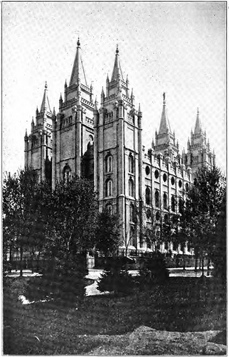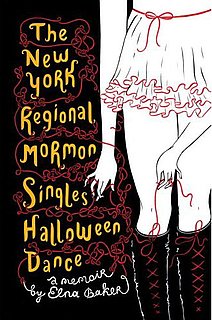
This week on Patheos.com, people are talking about the Future of Mormonism. Patheos has solicited guest posts from a number of different scholars and church leaders (a partial list is below; the final group includes LDS Public Affairs Director Mike Otterson and Elder Quentin Cook of the Quorum of the Twelve). As of this morning, most of the essays have been posted on the site, but if there’s an author you’re looking for who isn’t there yet, just check back in a couple of days. Here’s an overview from Patheos:
“One of the world’s fastest growing religious traditions, Mormonism faces the new century with the confidence born of success and the reservations that come from the difficulties of expansion. How will the Mormon Church continue to grow while maintaining its central authority and its emphasis on strong communities? These questions and more will be addressed in Patheos’ Future of Religion series.
Contributors include: Philip Barlow, Tresa Edmunds, Kristine Haglund, Brian Hales, Grant Hardy, Richard T. Livingston, Armand Mauss, Neylan McBaine, Bridget Jack Meyers, Blake Ostler, Michael Otterson, Seth Perry, Boyd Peterson, Aaron Reeves, Jana Riess, Jan Shipps, Daymon Smith, David Stewart, Stephen Taysom, Walter van Beek, and Margaret Blair Young & Darius Aidan Gray.”
My own piece is on the future of Mormon publishing, which (like all publishing) is in a time of transition. Here it is.
What is the Future of Mormon Publishing?: Four Trends
By Jana Riess
Last week at a Mormon conference, several people approached me for publishing advice. Would there be a market for a Mormon book about X? What would be the right publisher for a book about Y? And–perish the thought–are books going to disappear altogether?
The publishing industry is in a time of upheaval, even crisis. Venturing foolproof prognostication on its success or development requires a crystal ball I do not have. Everything I say here could change dramatically if–when–technology accelerates and we experience yet another paradigm shift. But for what it’s worth, here are four trends I see in Mormon publishing today, based on more than a decade in the religious publishing industry. In the decade ahead, I believe that:
Self-publishing will continue to explode. When I started in the publishing industry, we had to wrap our heads around the idea that over 100,000 books were published each year. More than ten years later, the figure is ten times that; 2010 will see more than a million new books in print. (!) That growth is due to the explosion of self-publishing as a viable option for authors. It’s cheaper than it used to be, it’s available to anyone who knows how to use a simple word processing program, and the production quality has improved immensely, especially in regard to book covers. In the next decade, increasing numbers of authors will choose to self-publish, either as a way to prove themselves before being accepted by a traditional publisher or as an end in itself.
Mormon publishing will continue to decentralize. This may seem like an odd claim given the fact that in the last ten years Deseret Book has gobbled up its strongest competitors, Bookcraft and Covenant, and become the largest LDS publisher by far. Deseret has also consolidated its hold on the LDS retail market by acquiring long-standing independent LDS bookstores and franchising them as Deseret stores, a brand Mormon consumers trust. So in some ways Deseret has a stranglehold on both the acquisition and distribution of books for the Mormon market.
Yet we are also seeing a powerful counter-trend in the creation of niche Mormon publishers like Zarahemla Books, Greg Kofford Books, and Salt Press. Given the decline of the traditional way of doing things (bookstores, unfortunately, are in enormous trouble), these mom-and-pop Mormon publishers are, along with self-publishers, the wave of the future. As with the rest of the publishing industry, what will matter over time is how these publishers find their particular niche within the Mormon market. Over the next ten years Deseret will solidify its presence as the non-fiction publishing outlet for officials of the Church, including General Authorities and auxiliary presidents. A case in point is Deseret’s huge fall release: an official biography of current church president Thomas S. Monson, due out on September 27. We will see more of that kind of “imprimatur” project from Deseret Book, and less of other kinds of non-fiction. Fiction will continue to be popular, but it will become increasingly difficult for new novelists to break into the Mormon market through Deseret, which has such high sales requirements.
What we’ll see in the next decade is a proliferation of small Mormon publishers to fill the gap for everyone else, the non-GAs who don’t have an automatic platform with which to sell 20,000 or more copies. In the past, it’s been difficult, and sometimes impossible, for publishers other than Deseret to get their books carried by Deseret retail stores, since Deseret naturally wants to offer its own products to sell in a non-competitive retail environment. That distribution obstacle will become increasingly obsolete, however, as more bookstores close down entirely–a trend from which Deseret is not immune. Print runs at these mom-and-pop houses will be small, but improved POD technology will enable them to return to press often at low cost to meet demand.

More non-Mormon publishers will be courting Mormon books. To me, this is the most exciting trend of all. On the academic side, we’ve seen real growth in the acceptance of Mormon Studies as a legitimate field, with presses like Oxford, the University of North Carolina, Palgrave, and Indiana all bringing out new titles on Mormonism. It used to be that this was done mostly by the University of Utah and the University of Illinois. On the popular front, general trade publishers have gotten into the act with titles like The New York Regional Mormon Singles Halloween Dance by Elna Baker (Dutton). One trend we’ll see is that publishers are more aware of the diversity that exists within the Mormon experience, as individual Mormons step up to tell their stories and the landscape is populated by books that don’t neatly fit into the old categories of “pro-Mormon propaganda” or “anti-Mormon diatribe.”
It will become even harder for Mormon authors to make a living. In the publishing industry, we used to say that fewer than one percent of authors make their living solely from writing. (I am not one of these, by the way.) I haven’t seen any recent statistics, but that figure has to be down to a fraction of a percent now. That’s because of the aforementioned explosion of books, of course, but it’s also due to the changing royalty structures of the last decade or two.
In the good old days, authors would receive a 15% royalty of the list price of the book, so if your book retailed at $20, you’d get three bucks. Sweet. As margins got tighter in the book industry, many publishers began to pay 15% of the net price of the book, which is half or even less than half of 15% of the list price. (The net price is what’s left over for the publisher after the bookseller’s substantial discount.) But we’re not stopping there. This summer I saw a book contract that offered the author–wait for it–5% of net receipts. In our $20 list price example above, that would mean the author gets just fifty cents for every book sold. And to make this math even more depressing, consider this: now that ebooks are rapidly gaining consumers (last month Amazon announced that ebook sales had outstripped hardcovers for the first time), and consumers have come to expect that ebooks can be had for the enticing low price of $9.99, an author might get even less. It’s enough to drive a Mormon author to drink.
So, there’s good news and bad news. The word on the street these days in publishing is that information wants to be free. One thing is certain: there will be an upsurge of the number of overall titles about the Mormon experience.

